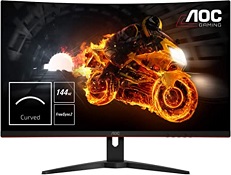What is Overclocking and how to overclock a monitor?
Overclocking is a term that is usually associated with CPU’s and GPU’s. However, computer monitors can also be overclocked.
The meaning of the word “Overclock” is to ‘run a computer’s processor at a clock speed beyond the base clock speed designed by the manufacturer’.
Overclocking a monitor means to change the stock refresh rate such that the refresh rate of your monitor is increased.
‘So Why is there a need to overclock a monitor instead of a CPU or a GPU?
Because, overclocking the monitor raises the overall performance of the monitor as games run relatively smoother. Moreover if a monitor doesn’t fall into the expensive category, overclocking can give the same experience as one of the more expensive monitors.Furthermore graphical motions are improved and that alone can change the overall feel of your gaming experience.
However overclocking reduces the monitor’s life. It creates significant heat in some instances to permanently damage the hardware.
Budget gamers can go through our list of the best gaming monitors under 150 and the best gaming monitors under 300 for overclocking options.
(You have to bear in mind that some manufacturers like Intel release their motherboards and CPU’s with locked multipliers that stop a user from fiddling with the machine)
HOW TO OVERCLOCK A MONITOR
Monitor overclocking can be achieved through the following steps:
(Note: The following steps are to be used if you use Intel Graphics)
- Select Intel HD graphics control panel.
- Click on display.
- On the left select custom resolutions.
- Type in your width, height and desired refresh rate.
- Click on add.
You can also usea third-party software like CRU, to overclock the monitor:
- Open CRU
- Select add under detailed resolutions.
- Select timing and convert it to LCD standard.
- Change refresh rate to what you wish(an increase of 5Hz is advised at first)
- Select OK.
- Restart your PC.
Windows 10 users need to carry out additional steps after restarting the PC
- Right click on the desktop and select display settings.
- Select advanced display settings.
- Move down and click on display adapter properties.
- In the monitor tab choose the required refresh rate through the drop down box.
If your screen doesn’t go blank then congratulations you have succeeded in overclocking your monitor, if it does go blank then it would return to its original settings in 15 seconds(This can happen if you choose a very high refresh rate).

